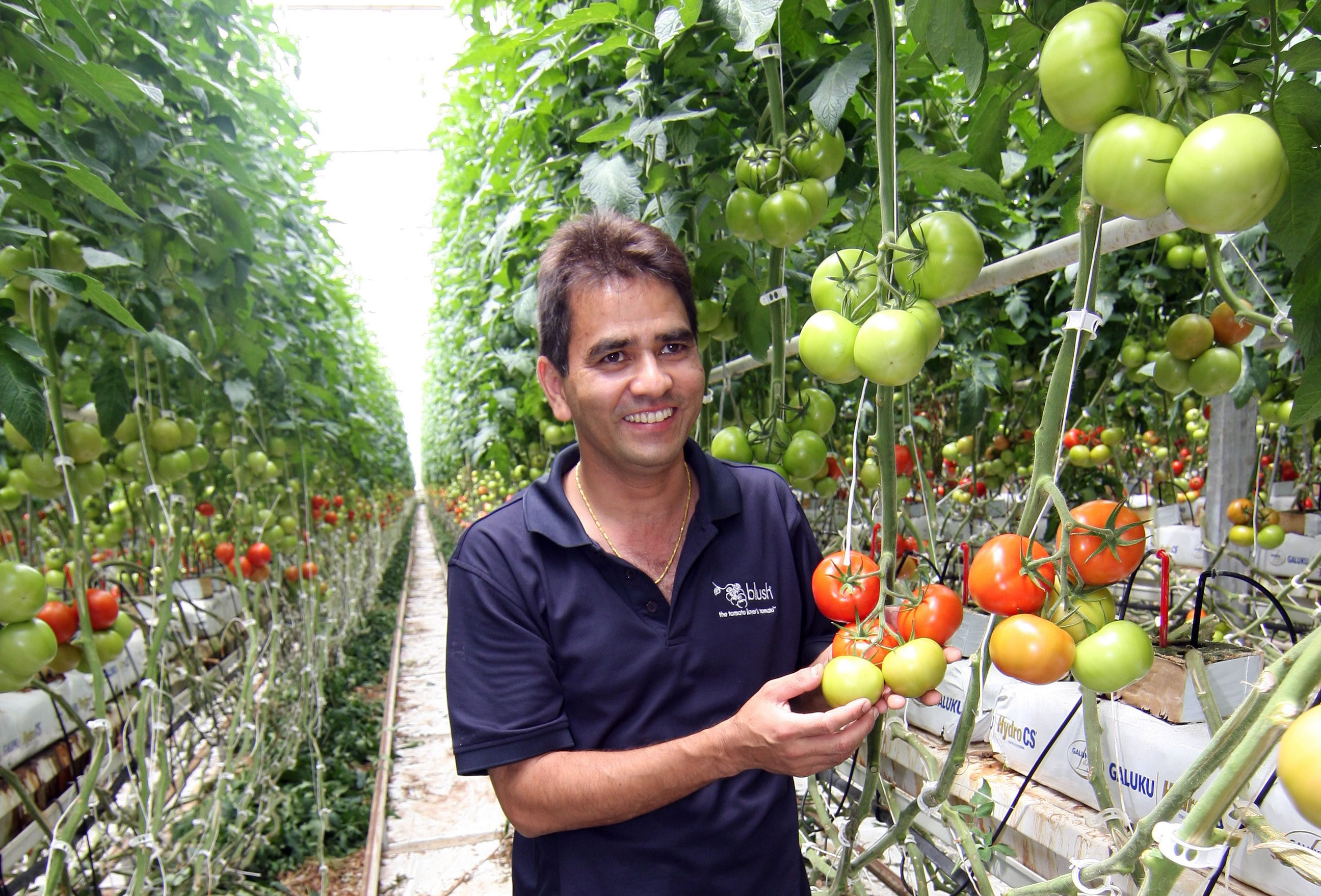Pick of the Week: savvy tomato grower covers his crop

For Australia’s largest protected-crop tomato grower, Costa’s Blush® Tomatoes in Guyra, the beauty of the business is that it’s as sustainable as it is profitable. And the tomatoes, say consumers, taste great.
The premium-grade tomatoes grown at Costa's protected cropping facility near Guyra. NSW.
Costa
Australia's fast-growing protected cropping industry is one of agriculture’s hottest new sectors, worth around 1.8 billion dollars per annum at the farm gate per annum and employing 10,000-plus people. Protected crop production is growing year by year: an increasing proportion of the fruit, veg and flowers now hitting domestic and overseas markets originate from protected cropping enterprises.
Many protected-crop growers are also punching above their weight in terms of sustainable, efficient production, technical innovation and product quality.
Take Costa’s 30-hectare glasshouse enterprise at Guyra, Blush® Tomatoes, Australia’s largest such facility, which produces more than 12.5 million kilograms of vine-ripened tomatoes per annum. Here, Senior Grower Keshav Timalsena helps achieve record yields through innovative climate and water management, varietal selection, pest and disease control and biosecurity.
Guyra was selected for the region’s mild summer temperatures and exceptionally sunny winters, which provide premium growing conditions for tomatoes and remove the need to heat or cool the glasshouses to compensate for external temperatures.
Water use efficiency at the facility is world-leading: just 12.5 litres of irrigation water is used to produce each kilogram of tomatoes (far less than the 100-200 litres per kilo required to grow field tomatoes). One-third of the greenhouse’s irrigated water is recirculated; another third is captured from the vast glasshouse complex roof.
Recirculation of fertilised drain water has halved the operation’s fertiliser usage, while sensors measure temperature, salt concentrations and water content to improve the efficiency of water and fertiliser use further.
Costa uses automatically guided vehicles (AGVs) to pick the ripe tomatoes, virtually eliminating the need for staff to lift five-kilogram trays. Costa
‘Clean’ propane fuel is used to heat the glasshouse, with the CO2 generated distributed into the glasshouse to reduce emissions and increase production.
Blush® Tomatoes have also developed a CO2 mathematical efficiency model that’s boosted yield and reduced the facility’s CO2 emissions. Ongoing research at the glasshouse also includes testing new tomato varieties for their suitability to Australia’s climate and market; testing new ways of coating greenhouse glass to increase yields; and looking at grafting’s effect on quality and yield.
Costa’s Guyra glasshouse complex is the first in the world to implement large-scale trials of biodegradable string – used to support plants grown at the facility and enabling the incorporation of plant waste generated post-harvest into the soil-composting program at a nearby waste facility.
Costa's Senior Grower Keshav Timalsena inspects the crop.
Costa
Biosecurity is a priority for the facility, which employs strict hygiene controls. Blush® Tomatoes now employs 600 people, which has greatly boosted the previously struggling town’s local economy.
In a world becoming more and more concerned about food safety, quality and security, we can expect increasing demand for food grown in protected cropping facilities such as Costa’s high-tech glasshouse complex.



